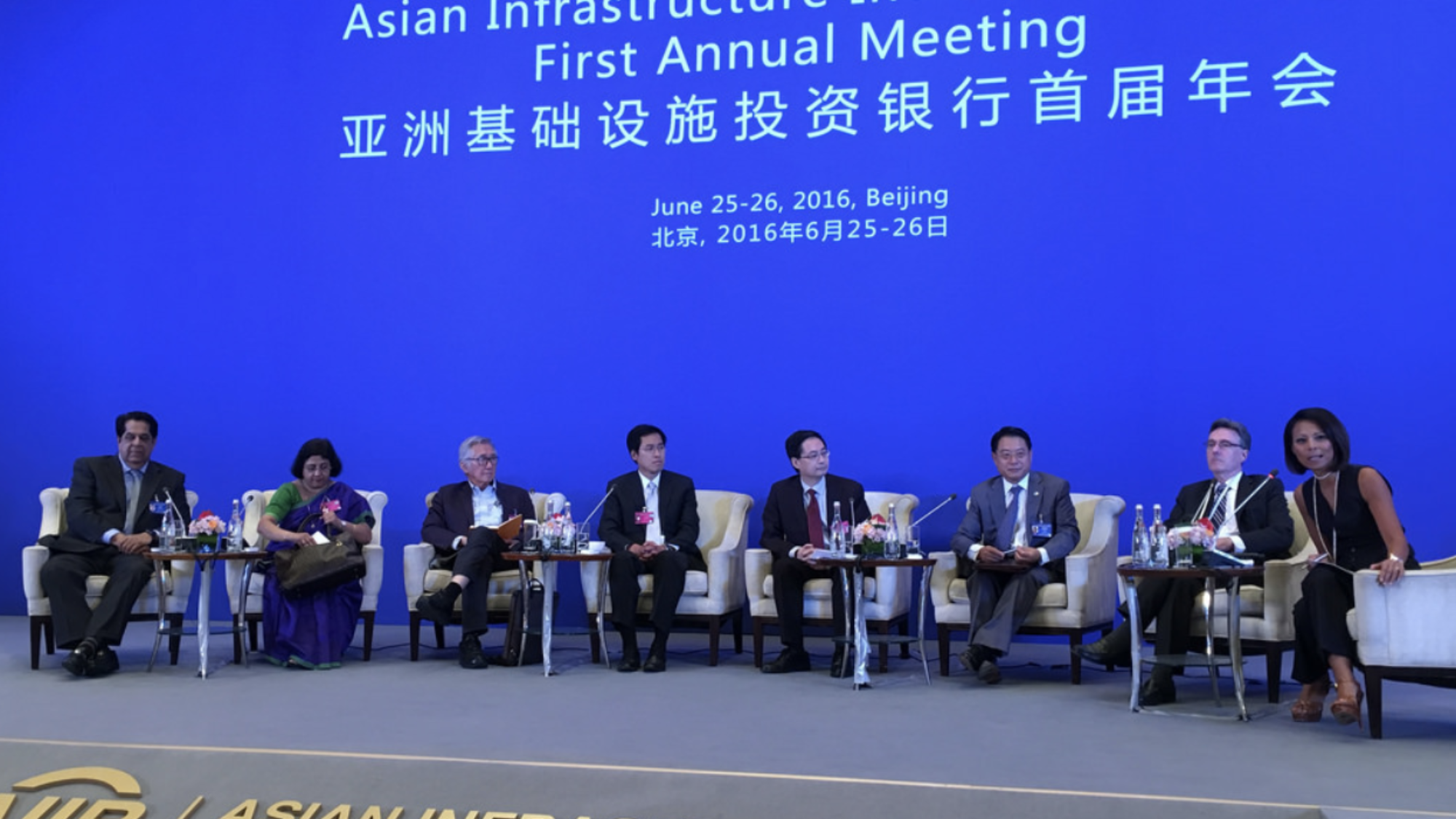GJIA: What is the Asian Infrastructure Investment Bank’s mission?
JA: Our mandate is to promote economic development in Asia through investments in infrastructure. We were born out of the recognition that infrastructure is a key driver for economic development, so we were given that mandate to invest in infrastructure – that means energy, transport, urban development, water – and use it as a stimulus for economic development and integration across Asia.
Where do you see the AIIB in 10 years? What are your biggest challenges going forward with development, and what are your biggest opportunities for growth?
We’re founded on the acknowledgement that the model of multilateral development banking is working very well and makes an important contribution to the world: bringing capital into investments in developing countries. AIIB was founded to amplify that model and create additional capacity to invest. We’re building on the successful model of the existing multilateral development banks, like the World Bank and Asian Development Bank, but we are trying to innovate and learn from the lessons from the last 7 years of experience in the World Bank. We’re still a start-up organization of 120 staff right now with very modest capacity, but the building up of the institution is proceeding very well. We have made more than $3 billion in financial commitments already to some 20 or more projects across the region, and we gradually build up our investments each year. I would guess that in 10 years, we could have something like $12 billion of investments per year, and by that time we’ll probably have some 500 staff. I think we’ll consider ourselves successful if we can turn our three operating principles into reality: green, meaning investment in sustainable infrastructure that helps countries with their transition to more sustainable energy and their Paris commitments; clean, meaning investment in projects that are free of corruption and really achieve benefits for the people; and finally, lean, meaning a bank that remains very efficient, agile and responsive – and one that works in partnership with existing banks and other institutions rather than build a lot of in-house capacity.
You were at the World Bank before moving to AIIB, and you’ve discussed the idea of being a partner with other institutions. What do you see as the relationship between AIIB and the World Bank?
We have been very fortunate to have a strong and productive relationship with the World Bank from the first day. Many World Bank staff and units have helped in the setting up of AIIB, and now we’re co-financing many projects together. I think that this is beneficial for AIIB, for the client countries and for the World Bank. AIIB’s staff capacity is still very small, but we have a clean balance sheet with which we can invest substantial resources. The World Bank, on the other hand, has very strong technical staff capacity, but it’s quite limited in its financial capacity. So we make perfect complements, and that benefits the clients. I think the partnership with the World Bank also illustrates how we want to work in collaboration and strengthen the multilateral development banking system rather than undermine it. In the early phases of AIIB, there were some suspicions that it might be set up to undermine standards, but none of that is true, and I think our close partnership with the World Bank – as well as the Asian Development Bank, the European Bank for Reconstruction and Development and other development banks – illustrates that point.
This transcript has been lightly edited for clarity and length.
. . ,.
Dr. Joachim von Amsberg is the Vice President for Policy and Strategy at the Asian Infrastructure Investment Bank. Prior to that, he held a variety of positions at the World Bank, including Vice President for Development Finance, Vice President for Operations Policy and Country Services and country directorships in the Philippines and Indonesia. In the latter position, he helped guide the World Bank’s funding of reconstruction projects following the 2004 Indonesian earthquake and tsunami. He also oversaw the replenishment of the International Development Association, the World Bank’s fund for the poorest countries it works with.

